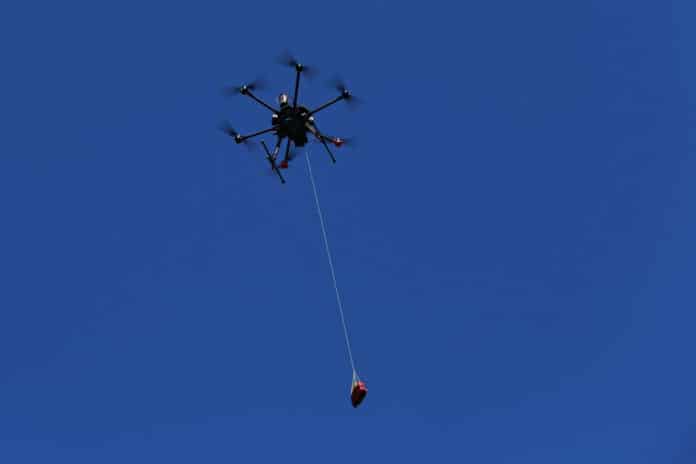When a person suffers sudden cardiac arrest, every minute counts. During cardiac arrest, the heart cannot pump blood to the rest of the body, including the brain and lungs. Death can happen in minutes without treatment.
Currently, as few as one in ten survive a cardiac arrest outside of the hospital. However, early Cardiopulmonary Resuscitation (CPR) and a shock from an automated external defibrillator (AED) could help save a person’s life and increase the survival chances to 50-70%. To get there, help needs to arrive faster.
In an effort to reach out-of-hospital cardiac arrest victims earlier, researchers at Karolinska Institutet explored using drones to quickly deliver defibrillators to real-life alerts of suspected cardiac arrest. The unique pilot project also includes the national emergency operator SOS Alarm, Region Västra Götaland, and drone operator Everdrone AB.
Researchers reported that the drones were dispatched in more than a fifth of the emergencies and arrived on target and ahead of the ambulance in most cases. Drones carrying an AEF can reduce response times in rural areas.
“This is the first time in the world that a research group can report results from a study where drones flew defibrillators to the location of real-life alerts of suspected cardiac arrest,” says lead researcher Andreas Claesson.
The project involved emergency operators, drone pilots, and air traffic control and saw drones used to dispatch defibrillators to sites of cardiac arrest during the four-month study period. The drones took off in response to 12 out of 53 alerts of suspected cardiac arrest and successfully delivered an AED to the site in 11 of those cases (92%). The drones traveled a median distance of 3.1 kilometers, and seven times the drones arrived before the ambulance, with a median time benefit of 1 minute and 52 seconds. However, none of the drone-delivered defibrillators were used before the ambulance arrived.
“Even if none of the AEDs were used this time, our study shows that it is possible to use drones to transport defibrillators in a safe way and with target precision during real-life emergencies,” says first-author Sofia Schierbeck. “A precondition for their future use is that the dispatcher takes the initiative and instructs people on-site to quickly collect and attach the AED in order to help the person with cardiac arrest.“
However, in 2020, the drones were unable to fly when it was dark, rainy, or winds of eight meters per second or more. The software system was also pre-set to avoid routes above densely populated areas, which meant that some alerts were geographically out of range. The team is working on further improving the technology capabilities needed to increase dispatch rate and time benefits.
“Since this study was completed, we have identified several areas of improvement,” Andreas Claesson says. “In April this year, we began a follow-up study with a more optimized system. In that study, we want to test if we can use the drones in more alerts and reduce the response time further, thereby increasing the time benefit compared to the ambulance. Every minute without treatment in the early stages reduces the chance of survival by around 10%, and that is why we believe this new method of delivery has the potential to save lives.“
